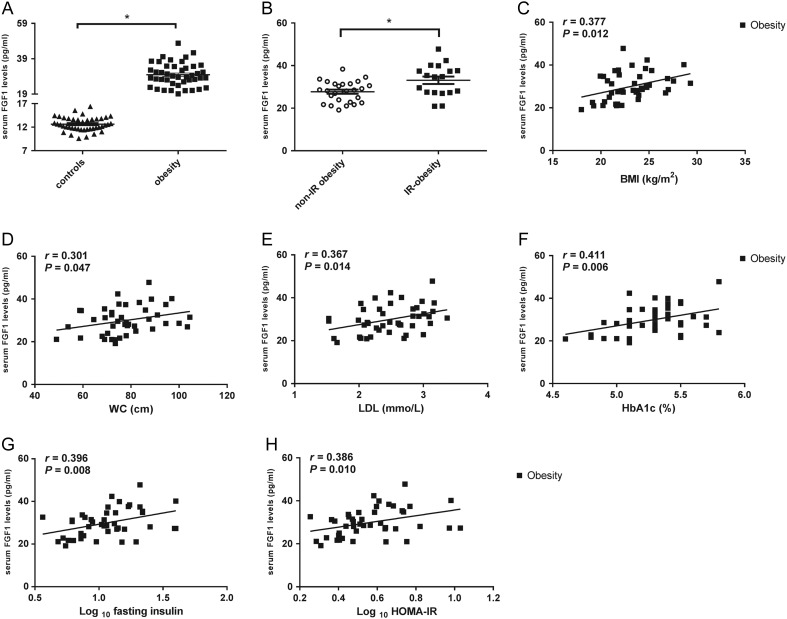Figure 1.
Comparison of circulation fibroblast growth factor 1 (FGF1) in different conditions. (A) Circulating FGF1 levels comparison between the obese children and adolescents (n = 44) and the normal-weight healthy controls (n = 44); (B) serum FGF1 levels comparison between the insulin-resistant (IR) (n = 18) and non-IR obese (n = 26) groups; (C) serum FGF1 levels were significantly correlated with BMI in the obese group; (D) circulating FGF1 levels were significantly correlated with waist circumference (WC) in the obese group; (E) serum FGF1 levels were significantly correlated with low-density lipoprotein cholesterol (LDL-C) in the obese group; (F) circulating FGF1 levels were significantly correlated with hemoglobin A1c (HbA1c) in the obese group; (G) FGF1 levels were significantly correlated with logarithmically transformed fasting insulin in obese individuals; (H) serum FGF1 levels were significantly correlated with logarithmic transformed homeostatic model assessment of insulin resistance (HOMA-IR) in the obese group. Data are shown as mean ± s.e.m. *P < 0.05.

 This work is licensed under a
This work is licensed under a 